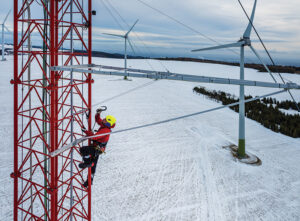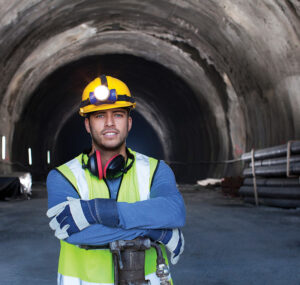Keeping Lone Workers Safe
By: Doug Niemtschk, CIH, CSP, Contributor

People working in field operations who work alone face different risks than those who work with a team. It’s essential to recognize what those risks are and to implement control measures to mitigate those risks. © VAKSMANV – stock.adobe.com
People working in field operations who work alone face different risks than those who work with a team. Safety professionals and industrial hygienists in any industry would not debate this fact. The question comes when someone asks, “What’s the risk of me working alone, and what do I do about it?” The first thing to do is help these workers recognize what those risks are and to implement control measures that will mitigate those risks.
Effectively addressing the lone worker risk is important for any business—whether it’s petroleum, chemical, utility, trucking, shipyard, agriculture or other industries. The challenge lies in how you address the risk, based on your organization’s unique needs.
More people work alone than you think. Berg Insight reports there are 53 million lone workers in the U.S., Canada and Europe combined, which is about 15% of the overall workforce. The International Data Corporation (IDC) estimates that approximately 1.3 billion people worldwide are mobile workers, many of whom work alone continuously or at various times during their workday.
Lone Worker Programs
 The goal of any lone worker program is to prevent workers from going undetected if they become incapacitated or trapped in the field and are unable to summon help. Meeting this goal requires that businesses develop a systematic approach that accomplishes several objectives:
The goal of any lone worker program is to prevent workers from going undetected if they become incapacitated or trapped in the field and are unable to summon help. Meeting this goal requires that businesses develop a systematic approach that accomplishes several objectives:
- Identify when workers will be in the field alone.
- Establish an alert system should a lone worker become incapacitated.
- Develop the means to summon emergency first responders capable of providing rapid response to any medical emergency.
For most of my 25 plus-year career, I have worked in chemical industries, such as refining, fertilizer production, crude storage facilities, etc. Since 2017, I have worked for a midstream petroleum company with pipeline and terminal operations primarily in the western half of the U.S. I have seen the advent of the development and implementation of a systematic approach to addressing lone worker safety. My company uses technology for solving the problem and has an excellent system that addresses the risk. Workers are at risk from potential exposure to hazardous gases, such as hydrogen sulfide and hydrocarbons. Therefore, monitoring technology is critical.
At my company, all lone workers are required to carry a monitor that tracks their location using a real-time GPS, as well as the hazardous gases to which they could be potentially exposed. If a worker becomes incapacitated, an alert is sent to a control center staffed 24/7 by people who can help summon emergency responders, if needed. The system can also notify the worker’s supervisor, who can assist in the response.
Other Methods: Keep Connected
There are also other methods an employer can use for addressing the lone worker risk, even if it is simply having a cell phone and a supervisor making sure the employee is OK by checking up on them periodically. However, any system that relies on electronic communication devices (e.g., cell phones) must recognize and address the challenge of connectivity.
Many industrial worksites are in remote locations where connectivity of the electronic device(s) the worker depends on can be an issue. It’s essential to know that the safety devices workers are relying upon can work anywhere.
Key to ensuring devices have the connectivity necessary in extremely remote locations is to ensure the devices have not only cellular but satellite connectivity, as well. When using satellite connectivity, the “bridge” should be portable to extend coverage in isolated areas. Consult an expert when designing or implementing these types of systems.
Recognize that all systems, whether they take advantage of technology or not, require people who are diligent in managing the lone worker risk.

Do take advantage of today’s technology, but recognize that there are many safety solutions for lone workers. This is key to developing a program that meets an organization’s needs. © Martin Barraud/KOTO – stock.adobe.com
Simple solutions, such as requiring employees to carry a cell phone while working in a remote work site would be the first step. Second, a protocol that requires workers to check in with their supervisor before they travel to a site and after they finish their task would be prudent. The supervisors, of course, would need to be trained on how to respond to a medical emergency, with the first action being calling 911 and giving the worker’s exact location.
In closing, recognize that there a many resources that companies can use to help develop their own lone worker program. For example, the U.S. OSHA Standard on Working Alone addresses this issue (29 CFR 1915.84); it lists the requirements of a good lone worker program. Although the standard only applies to shipyard employers, others can benefit from using it to establish their own programs.
The final question I’ll leave with readers of this article is: “How do you determine the right lone worker safety device for your work force?” The answer, in my opinion, is to consult a qualified industrial hygienist or safety professional first. They will help you develop a program or evaluate an existing one based upon your organization’s unique needs.
Ideally, you should take advantage of today’s technology that manages risk, but at the same time recognize that there are a multitude of safety solutions for lone workers. Choose the one you believe will be most effective in preventing poor outcomes in the case of emergencies.
As any good industrial hygienist or safety professional knows it’s imperative for employers to anticipate your lone worker risks. Control the unique hazards your workers face. It could mean the difference between a rapid response to an emergency and one that is delayed—which puts the worker at an increased risk.
Doug Niemtschk, CIH, CSP, is a Health and Safety Manager, EHS, with Holly Energy Partners.
Share on Socials!
Monitoring Workers’ Exposure in Confined Spaces
Air Sampling Verses Dispersion Modeling During the COVID-19 Pandemic
Monitoring for Asbestos
Leaders in Industrial Hygiene
Council for Accreditation in Occupational Hearing Conservation (CAOHC)
Subscribe!
Sign up to receive our industry publications for FREE!









